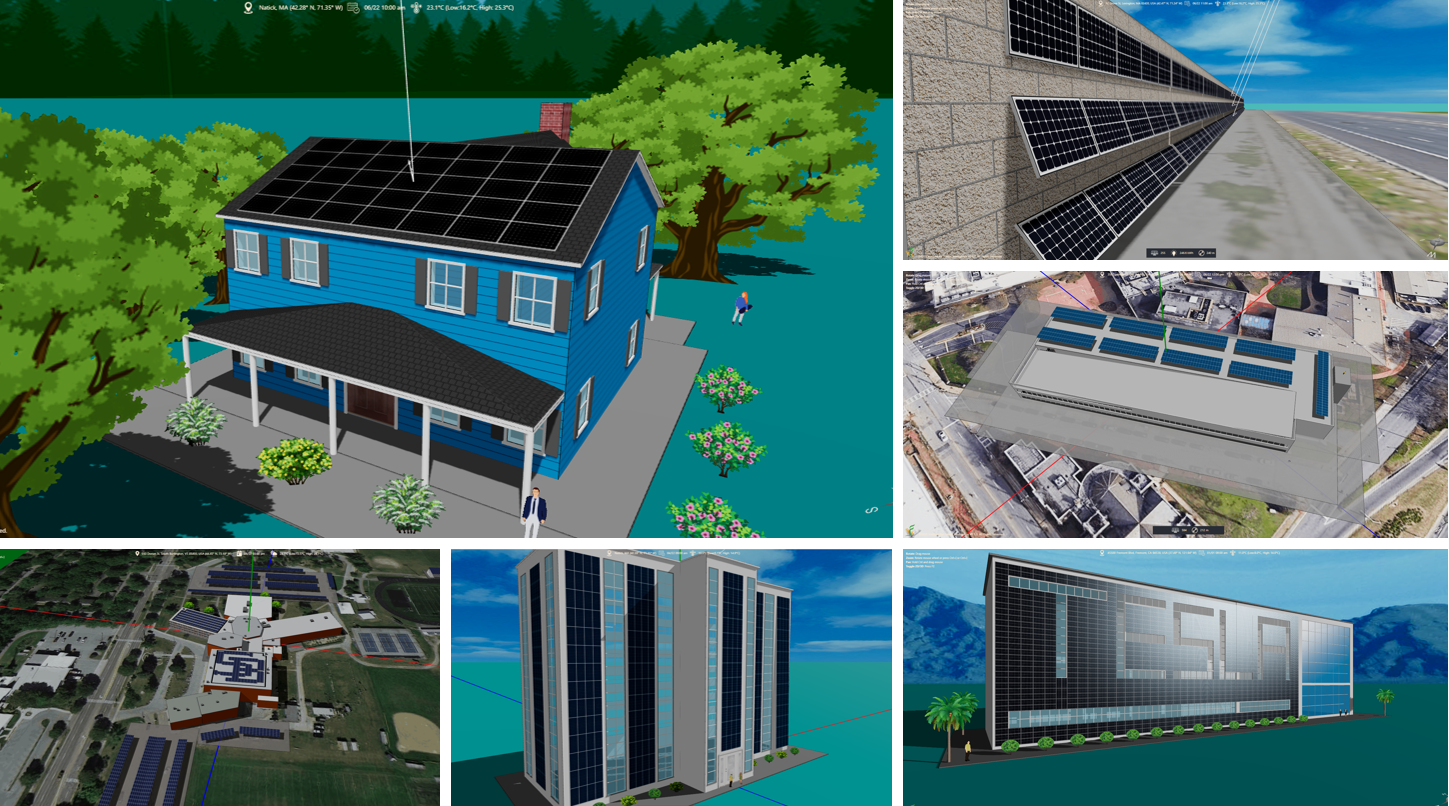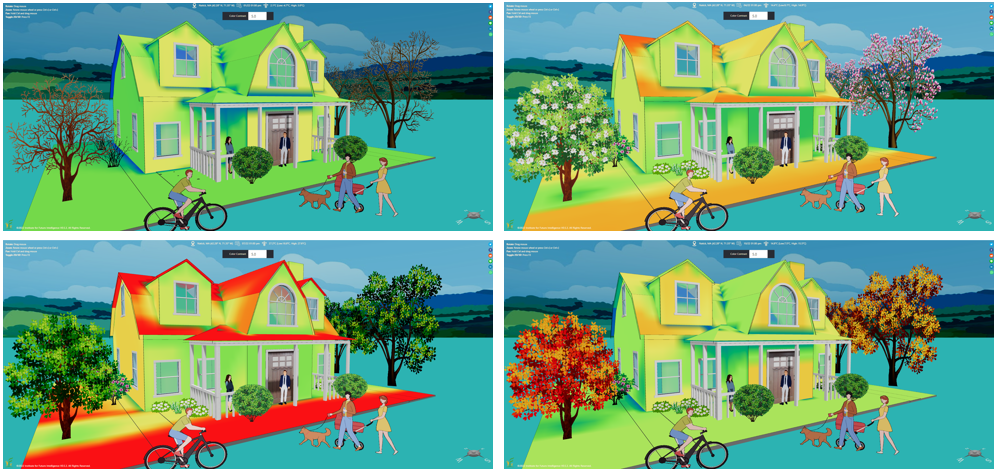Aladdin: Engineering Design Enhanced by AI
|
Artificial intelligence (AI) is changing the way people work. As a manifestation of human ingenuity, design is a vital testbed for studying how we may meet the opportunities and challenges posed by AI. Based on the fusion of CAD and CAE, Aladdin is an experimental platform for reimagining engineering design in the era of AI — in the contexts of architectural and energy engineering. Live model above (view in full screen) How to cite Aladdin?Charles Xie, Xiaotong Ding, & Rundong Jiang, Using Computer Graphics to Make Science Visible in Engineering Education, IEEE Computer Graphics and Applications, 43(5), 99-106, 2023. DOI:10.1109/MCG.2023.3298386 Design and simulation capabilitiesFirst, Aladdin is an integrated CAD/CAE platform that can be used to design a structure and simulate its function within a single system. This eliminates complicated toolchains needed in traditional engineering design software and reduces the difficulty in implementing automatic design using AI.
Second, by supporting the design and simulation of multiple types of renewable energy, as well as energy consumption of buildings, Aladdin makes it possible to model and analyze certain renewables colocation and microgrid systems on a single software platform. Artificial intelligence capabilitiesAladdin's AI capabilities are mainly based on generative design, a tabula rasa methodology inspired by biological evolution. Once the design criteria and constraints of a product are specified, generative design uses evolutionary computation to efficiently explore the entire parameter space supported by the software to find optimal solutions. During the iterative search for feasible solutions, the software automatically constructs a vast number of forms at each step, tests their functions using numerical simulations, evaluates their quality based on the given criteria and constraints, and then selects those that are closer to the goal for the next step. By repeating these computational routines many times, a variety of designs that meet the goal gradually emerge. Engineers then review these outputs, often with the aid of interactive visual analytics for intuitive evaluation and comparison across the board, and choose one or more designs for prototyping (see an example about concentrated solar power). This paradigm shift in design methods entails a fundamental change of mindset for design thinking that must be addressed in the engineering education of future workforce.
|
In Arabic folklore, Aladdin is a tale that features a magic lamp able to generate whatever its owner wants. In the field of design, AI has somewhat realized the fairytale — designers only need to specify what they want and AI would bring their wishes to life.
Entrance
Podcast
Troubleshooting
Engineering Domains
Articles
Tutorials
Educational Activities
Privacy Policy
Published Applications
Developers
This project is supported by the National Science Foundation (NSF) under grant numbers #2105695, #2131097, and #2301164. Any opinions, findings, and conclusions or recommendations expressed in this material, however, are those of the authors and do not necessarily reflect the views of NSF.
|





